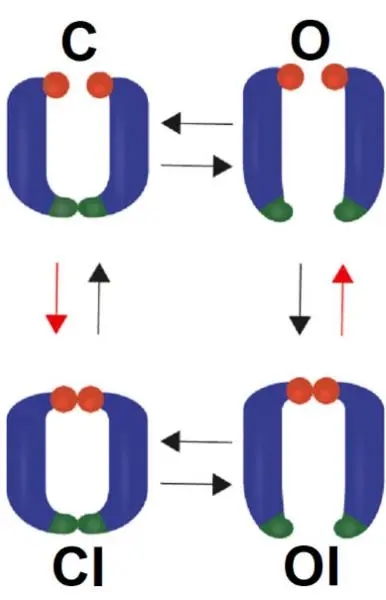Tibor G Szanto, Florina Zakany, Gyorgy Panyi and their colleagues investigated the development of steady-state inactivation at fairly negative membrane potentials and the obligatory gating transitions for recovery from inactivation in voltage-gated potassium channels (Kv) of the Shaker family. They employed the conventional patch clamp technique in inside-out configuration using different Shaker-IR constructs for studying both closed-state inactivation and recovery from inactivation using state-dependent cysteine accessibility assays (modification by applying ic. Cd2+ or Cd2+ crosslinking). Their results indicate that the closed inactivated (CI) state is populated via the C→O→OI→CI pathway and the closure of the activation gate is a precondition for recovery from inactivation. The biological significance of these findings is that both steady-state inactivation and recovery from inactivation essentially determine the fraction of channels available to open, which is critical for excitable cells. Moreover, understanding the gating transitions of KV channels may aid the design of more efficacious drugs with state-dependent binding. These results are published in Journal of General Physiology (J Gen Physiol (2020) 152 (8): e202012591, https://doi.org/10.1085/jgp.202012591 (IF: 3.628). A “Commentary” paper in in the journal highlighted the findings of the authors (J. Gen. Physiol. 2020 Vol. 152 No. 8 e202012611, https://doi.org/10.1085/jgp.202012611)

Figure. The gating of Shaker-IR channels can be described by the four-state gating model, in which four major gating states can be distinguished depending on the status of the activation (dark green) and inactivation (red spheres) gates. Two diagonally opposing pore domains are illustrated in the cartoons, for clarity. The theoretically existing transitions between these gating states are indicated by arrows. In this study the existence of direct C→CI and OI→O transitions (red arrows) at negative membrane potentials was investigated.